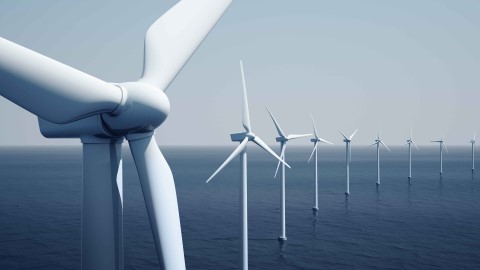France, a country known for its picturesque landscapes, fine wine, and rich culture, is also a key player in the global renewable energy market. With a commitment to reducing greenhouse gas emissions and increasing the share of renewables in its energy mix, France has been exploring various clean energy sources, including offshore wind energy. Offshore wind energy has immense potential in France, and the country is well-positioned to harness this power to meet its ambitious climate goals.
Offshore wind energy refers to the generation of electricity from wind turbines installed in the sea, usually on the continental shelf. These turbines can be placed further out to sea, where wind speeds are higher and more consistent, resulting in greater energy production. Offshore wind energy is a relatively untapped resource in France, with the country’s first offshore wind farm only beginning construction in 2021. However, the French government has recognized the potential of this renewable energy source and has set ambitious targets for its development.
In 2019, France announced plans to increase its offshore wind capacity to between 5.2 and 6.2 gigawatts (GW) by 2028. This is a significant increase from the current installed capacity of just 2 GW. To achieve this goal, the French government has been supporting the development of new offshore wind projects through various initiatives, including competitive auctions for project contracts and financial incentives for developers.
One of the most promising areas for offshore wind development in France is the country’s Atlantic coast. The region boasts strong and consistent winds, making it an ideal location for large-scale offshore wind farms. Several projects are already underway in this area, including the 480-megawatt (MW) Saint-Nazaire wind farm, which is expected to be operational by 2022. Once completed, this project will be the largest offshore wind farm in France, generating enough electricity to power approximately 400,000 homes.
Another area with significant potential for offshore wind energy in France is the English Channel. The region’s shallow waters and favorable wind conditions make it an attractive location for developers. In 2020, the French government awarded a contract for the development of a 1 GW offshore wind farm in the English Channel, which will be one of the largest in the world once completed.
In addition to these large-scale projects, France is also exploring innovative technologies to further harness the potential of offshore wind energy. One such technology is floating wind turbines, which can be installed in deeper waters where traditional fixed-bottom turbines are not feasible. France has already begun testing floating wind turbines, with the installation of a pilot project off the coast of Le Croisic in 2018. If successful, this technology could open up new areas for offshore wind development and significantly increase the country’s renewable energy capacity.
The development of offshore wind energy in France is not without its challenges. The sector faces regulatory hurdles, concerns about the environmental impact of large-scale projects, and competition from other renewable energy sources. However, the French government’s commitment to supporting the growth of the industry, combined with the country’s vast offshore wind potential, makes it an exciting area to watch in the coming years.
In conclusion, offshore wind energy holds immense potential for France as it seeks to diversify its energy mix and reduce its reliance on fossil fuels. With ambitious targets set by the government and several large-scale projects already underway, the country is well on its way to becoming a major player in the global offshore wind market. As France continues to explore innovative technologies and overcome challenges, the potential of offshore wind energy in the country is set to soar, contributing significantly to a cleaner, greener future.


